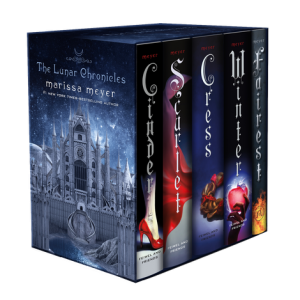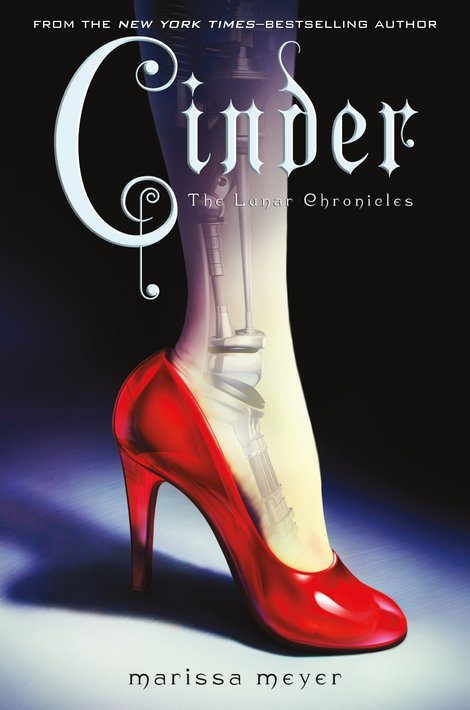The Lunar Chronicles are “futuristic retellings of classic fairy tales” (Meyer). Throughout her five novels, Marissa Meyer, a New York Times bestselling author, remakes the lives of four princesses: Cinderella (Cinder), Rapunzel (Cress), Red Riding Hood (Scarlet) and Snow White (Winter), as well as the Evil Queen (Queen Levana). In the first novel, the reader discovers that Cinder is a cyborg mechanic who is “reviled by her stepmother and blamed for her stepsister’s illness” (Meyer). She then meets Prince Kai and “suddenly finds herself at the center of an intergalactic struggle, and a forbidden attraction” (Meyer).

The antecedent texts that are being sampled are the fairytales we all grew up with. From Cinderella and Snow White to Little Red Riding Hood, these characters have been around since the early 1900’s and have been apart of many children’s childhoods. These original texts have been copied in the sense that the reader can still identify that the characters are ones they have seen before. The plots are similar, but not so much so that they are been outwardly plagiarized. The princess’s stories have adapted and transformed into a futuristic world and therefore the plot is shifted to match the new dystopian-like era as well. For example, Cinderella never crossed my mind as a mechanic (let alone a cyborg) until the release of Cinder, but even so, the new plot fits with the story while straying far enough from the original plot.

Though I have never read the series, I was surprised that I could not find any information on the books being subject to copyright infringement. While Dustin W. Edwards describes remix as something that “builds on or repurposes already existing material,” I have to wonder how Cinder does this so well as to not take any information that could lead to this offense. However, Edwards also mentions that “we do not create texts out of nowhere but we build them through the discovery of other texts” (Edwards). In Introduction to Fiction, we talked a lot about this topic and discussed how every story has been told, but it’s finding a new way of telling them that makes it interesting and new. I also agree with Vivian‘s post where she mentions, “Kim’s videos are a beautiful example of remix culture and new art that can be created through old art,” and feel this way about many works. Though I have not read the series, I have heard good things about the books and have seen good reviews as well. While these books specifically have not been subject to copyright, and although remix is not necessarily new, many other authors and video makers have due to the strict laws that have been recently put in place.
Remix equips us as media and content producers in the way that it “has come to signify a wide range of meaning and practice” and “are distinctive in purpose, delivery, design, and style” (Edwards). Publishers must be careful that the material that they are distributing into the world is not stealing from anyone else or can be seen as copyright infringement. I’m glad I couldn’t find anything about such relating to The Lunar Chronicles, but I also hope that others can freely express their thoughts, ideas, and creations in the future without the fear of possibly being brought to court because of copyright.
Word count: 556
Works cited:
Edwards, Dustin W. “Framing Remix Rhetorically: Toward a Typology of Transformative Work.” Computers and Composition 39 (2016): 41-54. 24 Dec. 2015. Web. 24 Feb. 2018.
“Whiteriverdesign.” Whiteriverdesign, White River Design, 2018, www.whiteriverdesign.com/lets-talk-copyright/.
“THE LUNAR CHRONICLES.” Lunar Chronicles, Macmillan, 2017, lunarchronicles.universeofmarissameyer.com/books/lunar-chronicles-boxed-set/.
